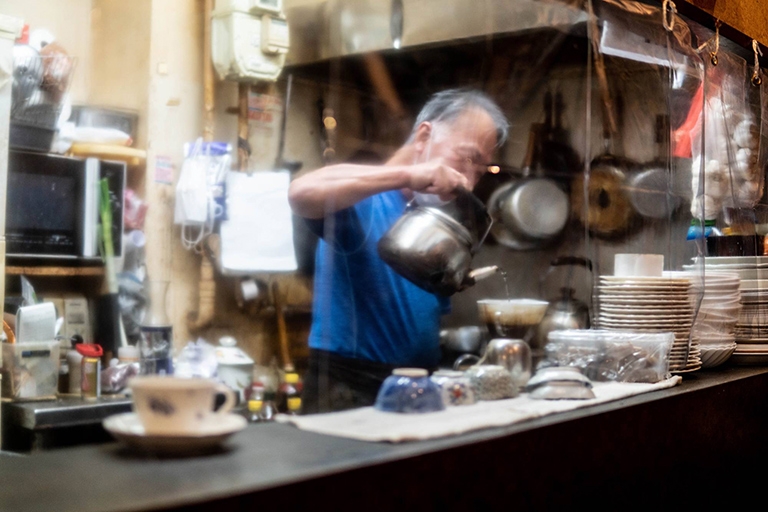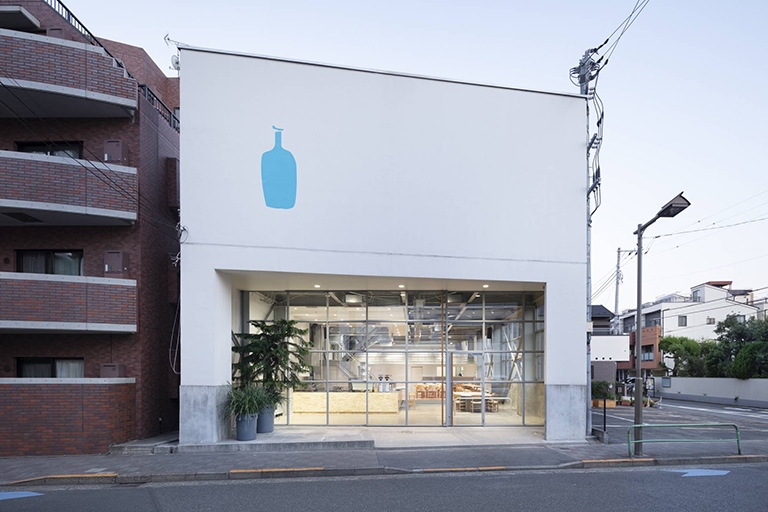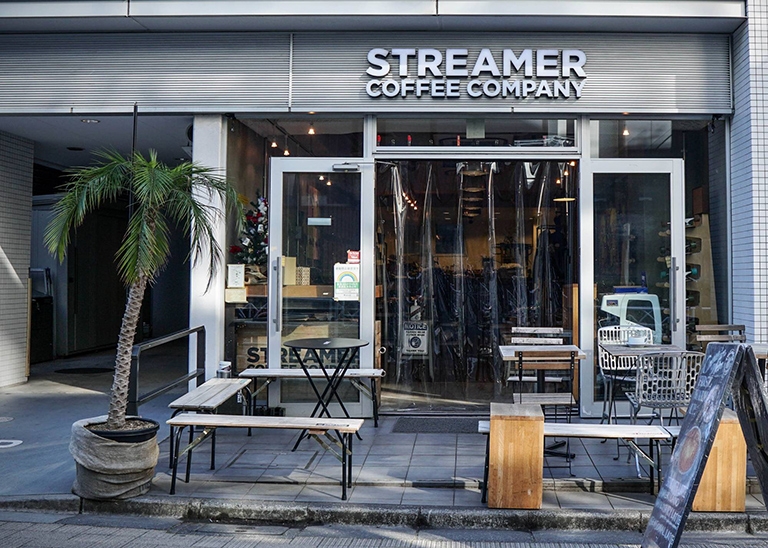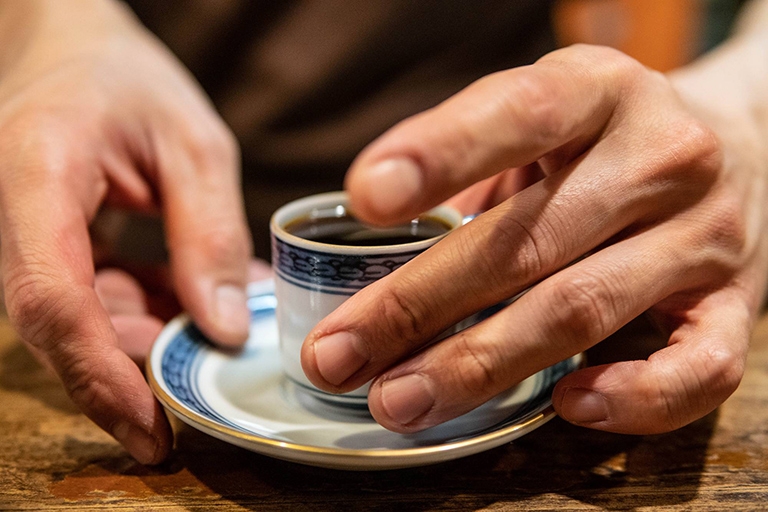
New faces: Akira Nagai says he’s had many “ups and downs over the years” as the owner of Coffee Ashi, an old-school coffee shop. | TOMMASO BARBETTA
As seen with Japan’s restaurant industry, the pandemic has added a level of risk to daily habits, transforming cafe culture. But as anthropologist Merry White writes in “Coffee Life in Japan,” change as a concept is nothing new, and cafes have “witnessed innovation, subversion and transgression in old and new urban cultures, politics and individual lives.”
By the numbers, the recent shift for coffee in Japan at large is from in-store to home consumption. Key Coffee, a major coffee bean distributor based in Tokyo, recently reported a more than 30% increase in sales for home products. But the state of the nation’s cafes, from historically oriented kissaten and innovative third-wave shops, is more nuanced.
“There is something about cafes that cannot be expressed in numbers. It’s a third place,” says Terutaka Yamaji, the founder of Streamer Coffee Company, a pioneering third-wave coffee shop. According to Yamaji, the cafe “(supports) life through COVID,” with both owner and customer adapting to the so-called new normal.
For Japan’s third-wave cafes, also known as specialty coffee shops, the pandemic-prompted digital revolution has accelerated the adoption of new distribution avenues. When Streamer Coffee Company closed its brick-and-mortar locations during the first state of emergency last May, it opened its first online shop, selling beans and merchandise as a way to reach customers. Subscription services, previously rare in Japan, flourished.

Digital space: Blue Bottle Coffee Japan, an outpost of the California-based specialty coffee business, has held online coffee classes and cupping seminars throughout the pandemic. | COURTESY OF BLUE BOTTLE COFFEE JAPAN
“We used to think that the (cafe) experience only happens on site,” says Ryo Itoh, Japan country director at Blue Bottle Coffee. “But with the help of technologies such as Zoom and Google Hangouts, we can really reshape the experience we provide to our guests.” Blue Bottle Coffee Japan, an outpost of the California-based specialty coffee business, has held online coffee classes and cupping seminars throughout the pandemic. And now, Itoh envisions a future where an app seamlessly connects the online and offline in a “personalized, tailor-made experience.”
At its core, digital innovation spurs ease of coffee consumption. It goes hand-in-hand with a second dichotomous change: a return to the local. Conversations with owners and baristas of shops large and small reveal that new customers from the local community have begun to discover cafes that have always been in their own backyard. For many specialty cafes, which heavily rely on the influx of international tourists, this has even helped to displace the loss of customers.
Yamaji recalls one new customer at Streamer’s flagship Shibuya shop: “They live behind us. They have walked the street for 10 years,” he says.

Backyard finds: For cafes that rely on international tourists, like Streamer Coffee Company, an influx of local clientele has helped offset losses. | TOMMASO BARBETTA
This same local pivot has benefitted more suburban coffee shops, too. Tomoya Otani, the general manager of Allpress Espresso Japan, a branch of a specialty coffee shop from New Zealand, has watched sales and business trends among wholesale clients. “For Allpress, the businesses in residential areas are recovering more quickly than those in business-centered areas,” he says.
Fujihiko Hayashi, the master at Cafe de L’Ambre in Ginza (and nephew of the store’s late founder, Ichiro Sekiguchi), affirms that the pandemic’s impact on coffee shops has diverged mainly by location. An increase in local regulars, he articulates, “might have occurred in residential areas, but not here in Ginza. This is a business district. People are working remotely now.” For Hayashi, creating a “virtual shop” is not a desirable or realistic avenue at the moment. But that may be beside the point: Kissaten, writes Jessica Kozuka, a Tokyo-based writer, “tend to have very little social media presence and basic Japanese-only websites, often relying on word of mouth.”
These two seemingly contradictory phenomena — digital and local — have marked something of a silver lining for coffee culture across Japan. As Otani elegantly puts it, the functions of cafes are varied and diverse: for some, they serve as a charging station, others “look for great cafe food, a place to chat, to meet business partners.” As much of Japan’s Kanto region heads into a second state of emergency, there may be further innovations and alterations to coffee culture on the horizon.

Lost business: An increase in local regulars, Fujihiko Hayashi articulates, “might have occurred in residential areas, but not here in Ginza.” | TOMMASO BARBETTA




